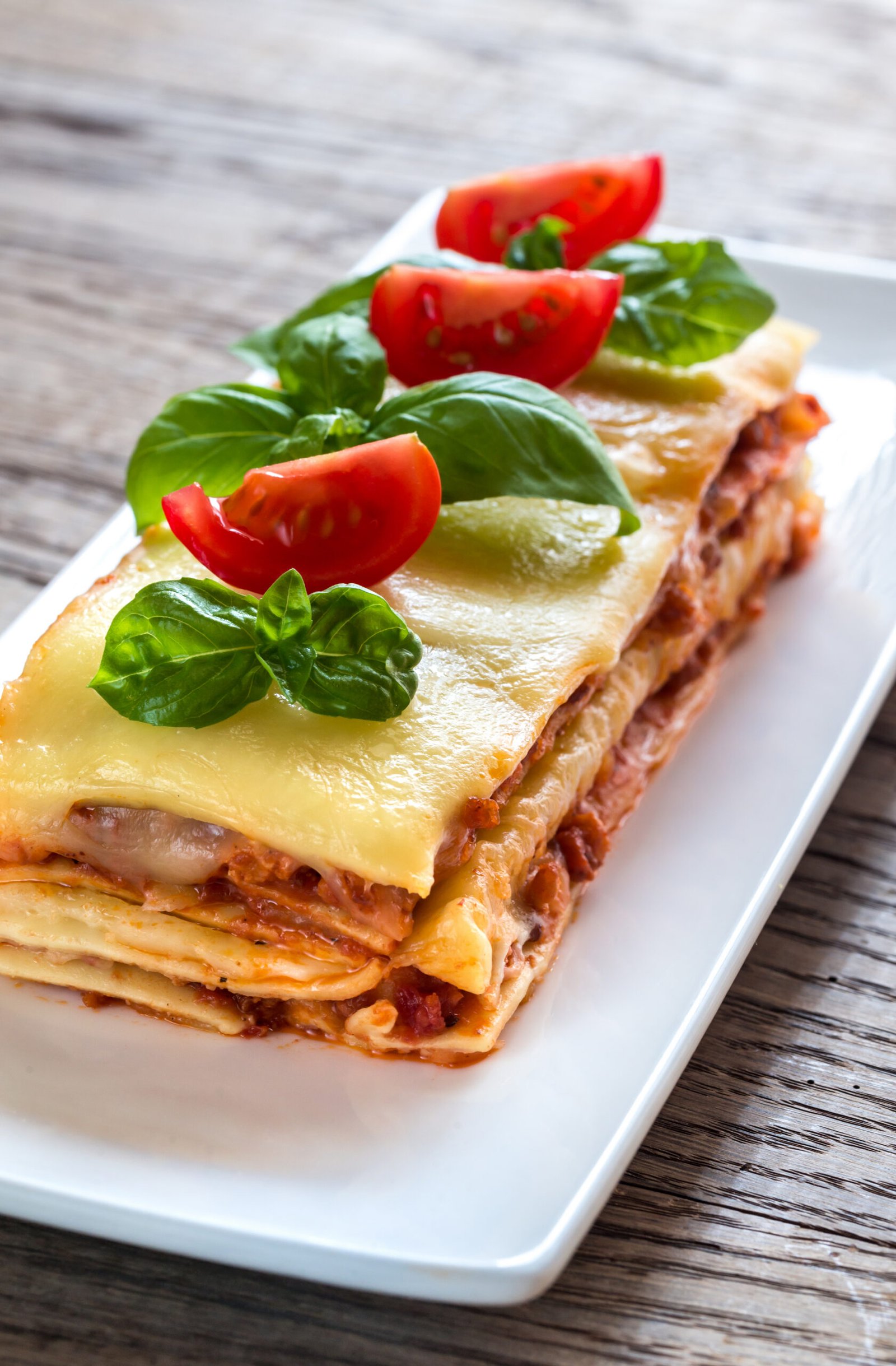Introduction
Ever wondered why Italians seem to have an extra spring in their step and a twinkle in their eye? It might just be la dolce vita, the sweet life, fueled by the delicious and healthful Mediterranean diet. The health benefits of Italian cuisine are no secret, and it’s no wonder Italy ranks as the 2nd healthiest country in the world according to the Bloomberg Global Health Index 2019.
What Makes Mediterranean Food So Good for You?
Mediterranean food is celebrated for its fresh ingredients, balanced nutrition, and heart-healthy components. Italians have mastered the art of eating well without compromising on flavor or enjoyment:
- Balanced Carbs: Pasta isn’t a guilty pleasure; it’s part of a balanced meal. Italians often use pasta as a first course, followed by smaller portions of protein and vegetables.
- Fresh Ingredients: Local and seasonal produce take center stage, ensuring meals are nutrient-rich and flavorful.
- Healthy Fats: Olive oil is a staple, known for promoting heart health and reducing inflammation.
- Mindful Eating: Heavy desserts are rare. Instead, you’ll find lighter options like fresh fruit or a simple espresso to end meals.
Italy’s emphasis on quality over quantity extends beyond the kitchen. Italians walk more and stress less, contributing to their overall well-being.
Want to enjoy some gluten-free pasta options in your own kitchen? Check out these ideas.
So, ready to dive into why this cuisine is a feast not just for your taste buds but for your health too? Let’s dig in!
1. The Mediterranean Diet: A Way of Life
1.1 Balanced Approach to Carbohydrates
When it comes to carbs, Italians have mastered the art of balance as part of their Mediterranean diet. Unlike the carb-phobia that’s prevalent elsewhere, Italians wholeheartedly embrace carbohydrates but with finesse.
Italians’ Creative Approach to Balancing Carbohydrates
Imagine a mouthwatering plate of pasta as the first course, followed by smaller portions of healthier dishes like grilled vegetables, fish, or a refreshing salad. This isn’t just about taste; it’s a well-thought-out strategy. By starting with pasta, Italians satisfy their carb cravings early on, which makes it easier to enjoy the subsequent lighter dishes without overindulging.
Benefits of this approach include:
- Sustained energy levels: Consuming carbohydrates in moderation helps maintain steady energy throughout the day.
- Better digestion: Smaller portions and balanced meals aid in better digestion.
- Curbing overeating: Starting with carbs can make you feel fuller faster, reducing the likelihood of overeating later.
Take a cue from the Italian playbook: enjoy your carbs but balance them with plenty of veggies and lean proteins.
Use of Pasta as a First Course Followed by Smaller Portions of Healthier Dishes
Ever notice how Italian meals are often structured? They typically start with primi piatti (first courses) like pasta or risotto and then move onto secondi piatti (second courses) which are usually lighter and more protein-focused. Here’s why this works so well:
- Moderation is key: By having pasta first, they can control portion sizes more effectively.
- Nutritional Balance: Following up with nutrient-dense dishes ensures they get all the necessary vitamins and minerals.
Think of it as indulging wisely—have your cake…or pasta…and eat it too!
One might argue that Italians know how to make even simple carbs work for them. For example, many Italian breads and pastas are made from durum wheat flour, which has its own set of benefits.
1.2 Healthier Bread and Pasta Choices
Durum wheat flour is often used in Italian bread and pasta. This might sound fancy, but it’s basically just a type of wheat that’s high in protein and gluten content.
Why Durum Wheat Flour?
This type of flour leads to a lower blood sugar spike compared to refined grains. That means no post-pasta crash! Plus,
- Stable Blood Sugar Levels: It helps in maintaining stable blood sugar levels.
- Satiety: High protein content keeps you feeling full longer.
So next time you’re shopping for pasta or bread, look for those made from durum wheat flour. Your body will thank you!
For those interested in diving deeper into authentic Italian recipes made from healthier ingredients, check out this authentic Sicilian cannoli recipe.
1.3 Mindful Eating and Enjoying Desserts in Italian Culture
Now let’s talk desserts – because what’s life without a little sweetness? In Italy, heavy desserts are pretty uncommon after meals.
Italian Dessert Habits
Italians
1.2 Healthier Bread and Pasta Choices
When it comes to Italian cuisine, one can’t simply ignore the magic that resides in their bread and pasta. The secret ingredient? Durum wheat flour.
Durum Wheat Flour: The Heart of Italian Staples
Durum wheat flour is a staple in many Italian breads and pastas. This golden grain is not just any ordinary flour; it’s packed with nutrients that make it a healthier choice compared to refined grains.
- Rich in Protein: Durum wheat contains more protein than most other wheats, making it an excellent choice for those looking to maintain or build muscle.
- High in Fiber: It’s also higher in fiber, which aids in digestion and keeps you feeling full longer.
Imagine biting into a plate of spaghetti made with durum wheat pasta – your taste buds are happy, and your body is too.
Low Blood Sugar Spike? Si, Grazie!
Eating foods made from refined grains can lead to quick spikes in blood sugar levels, followed by equally quick crashes. This roller coaster isn’t exactly a joy ride for your health. Enter durum wheat, stage left.
- Slower Digestion: Durum wheat digests more slowly than its refined counterparts. This means it releases sugar into the bloodstream at a more gradual pace.
- Stable Energy Levels: With slower digestion and a steadier release of sugar, you get sustained energy without the dreaded sugar crash.
That’s why choosing products made with durum wheat flour is like giving your body a high-five for being awesome.
Choosing Wisely: Bread & Pasta Options
Italians take their bread and pasta choices seriously – after all, they’re culinary artists. Here are some tips to keep your carbohydrate intake balanced:
- Opt for Whole Grain Versions: Whenever possible, choose whole grain bread and pasta options made from durum wheat. These versions retain more nutrients compared to their refined counterparts.
- Check Labels: Look for labels indicating “whole durum wheat” or “semolina” as primary ingredients.
For instance:
- Penne integrali (whole grain penne) paired with a light tomato basil sauce
- Pane di semola (semolina bread) with a drizzle of olive oil
Your taste buds will dance the tarantella while your blood sugar levels remain steady.
Embracing these healthier choices doesn’t mean skimping on flavor or tradition. It’s about enjoying food that loves you back. So next time you’re at the store or cooking at home, think like an Italian – prioritize quality and balance. Buon appetito!
1.3 Mindful Eating and Enjoying Desserts in Italian Culture
Italian cuisine is more than just delicious flavors—it’s a way of life, deeply rooted in the principles of the Mediterranean diet. Italians have a unique approach when it comes to desserts, focusing on mindful eating and balance.
Uncommon Occurrence of Heavy Desserts
In Italy, people don’t often indulge in heavy, sugar-laden desserts. Instead:
- Lighter Options: Italians typically choose simpler, lighter dessert options. For example, a small serving of gelato or a slice of torta della nonna, which is not overly sweet.
- Cultural Preference: Special treats are usually reserved for special occasions. Regular meals end with something refreshing and light.
Preference for Coffee or Seasonal Fruit
After a meal, Italians often have:
- Coffee: A small espresso or macchiato is a common choice. It provides that perfect caffeine kick without adding unnecessary calories.
- Seasonal Fruit: Fresh fruit like figs, oranges, or berries are preferred. They’re naturally sweet and packed with vitamins.
This habit perfectly aligns with the Mediterranean diet’s focus on fresh, seasonal produce.
Practice of Mindful Eating
Mindful eating is more than just a trend in Italy; it’s a lifestyle. Here’s how they do it:
- Portion Control: Italians are experts at portion control. Even when enjoying something delightful like tiramisu, the servings are small.
- Slow Eating: Meals are enjoyed slowly. This not only makes the experience more pleasurable but also aids digestion.
- Social Aspect: Eating together is common. Sharing meals with loved ones encourages slower eating and better digestion.
Promoting Better Digestion and Avoiding Excessive Sugar Intake
Mindful eating in Italian culture helps:
- Avoid Sugar Overload: By choosing lighter desserts and smaller portions, they minimize excessive sugar intake.
- Improve Digestion: The leisurely pace of meals allows the digestive system to work at its best.
It’s all about balance—enjoying food without going overboard.
“In Italy, we don’t just eat to fill our stomachs; we eat to nourish our souls.”
The Mediterranean diet isn’t just about what you eat; it’s about how you eat it. The focus on mindful eating extends beyond desserts to every aspect of Italian cuisine.
This way of life has significant health benefits, contributing to Italy’s position as one of the healthiest countries in the world. And who knew? Sometimes less really is more!
2. Active Lifestyle and Fresh Ingredients in Italian Cuisine
Italian cuisine is more than just delicious food; it’s a way of celebrating life. Italians live an active lifestyle and place importance on using fresh ingredients, making every meal a delightful experience. But how do they manage to make their dishes both tasty and healthy? Let’s find out.
2.1 Prioritizing High-Quality Food from Sustainable Sources
Italians believe in choosing quality over quantity when it comes to food. They would rather enjoy a few bites of something amazing than fill up on mediocre dishes. The key lies in their focus on using high-quality ingredients that are sourced from sustainable and local suppliers.
High-Quality Over Quantity
- Taste the difference: Ever wonder why Italian food tastes so incredible? It’s because they use top-notch ingredients. Just imagine biting into a perfectly ripe tomato that was picked at its peak freshness—there’s nothing quite like it! Italians understand this and refuse to settle for anything less.
- Nutritional value: High-quality food isn’t just about taste; it’s also packed with essential nutrients. Organic fruits and vegetables, for example, often contain higher levels of vitamins and minerals compared to conventionally grown ones. This means you’re getting more nutritional benefits from your meals.
Locally Sourced and Organic Products
- Farm-to-table: Italy has a strong tradition of buying produce directly from local farmers at nearby markets. This “farm-to-table” approach ensures that the food is not only fresher but also supports the local agricultural community.
- Seasonal delights: Italians are experts at enjoying foods that are in season. Not only do these fruits and vegetables taste better, but they also tend to be more nutritious. Just think about biting into juicy strawberries in June or savoring flavorful artichokes in April—each bite is like a celebration of nature’s bounty.
- Organic goodness: Organic farming practices are highly regarded in Italy. By avoiding the use of synthetic pesticides and fertilizers, organic products are not only better for your health but also more environmentally friendly.
Improved Overall Health
The link between high-quality, locally-sourced food and good health is clear:
- Better digestion: Fresh, unprocessed foods are easier for your body to digest, reducing the risk of issues like bloating or indigestion.
- Sustained energy levels: Eating nutrient-dense foods helps maintain stable energy levels throughout the day, keeping fatigue at bay.
- Weight management: When you consume high-quality foods that are rich in nutrients, you’re less likely to overeat. This can help with maintaining a healthy weight without having to constantly count calories.
Embracing Nature and Managing Stress the Italian Way
Living la dolce vita (the sweet life) isn’t just about eating well; it’s also about finding joy in everyday activities and staying connected with nature.
Love for Outdoor Activities
Italians have a natural inclination towards spending time outdoors:
- Passeggiata: This leisurely evening stroll is practically sacred in Italy. Families walk together after dinner, chatting with neighbors and enjoying the fresh air—a perfect way to aid digestion.
- Cycling enthusiasts: Cycling isn’t just seen as a sport; it’s a way of life. Whether it’s leisurely rides through vineyards or intense road races, cycling allows Italians to stay fit while immersing themselves in breathtaking scenery.
- Sun exposure: Vitamin D is essential for maintaining good health, particularly for strong bones and a robust immune system. With plenty of sunny days, Italians naturally get their dose of this vital vitamin while engaging in outdoor pursuits.
Stress-Free Living
Italians excel at managing stress through these practices:
- Natural living: Instead of relying heavily on modern conveniences like air conditioning (which can sometimes feel too cold), Italians prefer more natural ways to stay cool—such as spending time at the beach or retreating to the mountains.
- Social connections: Strong relationships with family and friends significantly contribute to mental well-being. Whether it’s gathering for a meal or meeting up for a coffee, these social interactions help reduce stress levels.
- Mindfulness: Italians incorporate mindfulness into their daily lives, whether it’s fully savoring each bite during meals or taking moments to appreciate simple pleasures. This mindful approach is deeply ingrained in Italian culture.
By choosing high-quality food sourced sustainably and embracing an active lifestyle filled with outdoor activities, Italians have discovered a beautiful balance between indulgence and well-being. Their way of life offers valuable lessons for anyone seeking to improve their health through dietary and lifestyle choices.
Looking for more tips on how to live your healthiest life inspired by Italian culture? Keep reading as we explore further into how you can adopt these habits into your everyday routine!
2.2 Embracing Nature and Managing Stress the Italian Way
Have you ever wondered why Italians always seem so relaxed and happy? It’s not just because of the gelato! Italians have a special talent for embracing natural ways of living and handling stress, which greatly contributes to their overall well-being.
1. Active Lifestyle
Italians choose to walk or bike instead of relying heavily on cars or public transportation like many other cultures. This active lifestyle not only helps them burn calories but also improves their heart health. Imagine leisurely strolling through charming streets after a satisfying meal—it’s not just romantic; it’s incredibly good for your body too!
2. Sun Exposure
Italy’s sunny weather plays a big role in keeping its people healthy. Moderate sun exposure triggers the production of vitamin D in the body, which is essential for strong bones and better insulin function. So the next time you’re basking in the sun, remember that you’re also soaking up some much-needed health benefits!
3. Local Produce
Italians understand the importance of eating fresh, locally sourced fruits and vegetables that are in season. Seasonal produce is not only more flavorful but also packed with higher amounts of vitamins and minerals. Just think about juicy tomatoes during the summer or hearty squash in the winter—each season brings its own variety of nutritious goodies.
4. Natural Ways of Living
4.1 Outdoor Activities
Instead of spending most of their free time indoors with air conditioning, Italians prefer engaging in outdoor activities like going to the beach or hiking in the mountains. This connection with nature helps them lower their stress levels and find inner peace.
4.2 Stress Management
The Italian way of life places great emphasis on finding ways to reduce stress. Whether it’s through leisurely evening strolls (known as passeggiatas) or enjoying a peaceful day by the sea, these practices are fantastic for improving one’s mental well-being.
“A relaxed mind equals a healthier body.”
– Italian proverb
It’s clear that managing stress is a crucial part of maintaining good health. So the next time you find yourself feeling overwhelmed, take a page from the Italian handbook:
- Step outside and immerse yourself in nature.
- Take slow, deep breaths to calm your mind.
- Embrace the beauty of fresh air and sunlight.
And who knows? Maybe you can even start planning that dream trip to Italy—the ultimate getaway for both your soul and your well-being!
3. The Mediterranean Diet: A Holistic Approach to Health and Happiness
The Mediterranean diet is more than just a way of eating; it’s a lifestyle that promotes holistic well-being. This approach connects deeply with the concept of “la dolce vita” (the sweet life), where balance, enjoyment, and health go hand in hand.
Encompassing Various Aspects of a Healthy Lifestyle
The Mediterranean diet isn’t just about what you eat; it’s about how you live:
- Natural Ingredients: Fresh, local produce, whole grains, lean proteins, and healthy fats like olive oil form the foundation.
- Physical Activity: Daily activities such as walking and cycling are integral.
- Social Connections: Meals are often shared with family and friends, fostering social bonds.
- Mindful Eating: Enjoying food slowly and savoring each bite is encouraged.
Achieving Balance in Food Choices
Balance is key in the Mediterranean diet. It’s not about strict restrictions but rather making thoughtful choices:
- Portion Control: Small servings of pasta followed by vegetables or lean proteins.
- Variety: Incorporating diverse foods to ensure a wide range of nutrients.
- Flexibility: Allowing occasional indulgences without guilt.
3.1 Moderation, Not Deprivation: The Role of Gelato in the Mediterranean Diet
Gelato isn’t just a treat; it’s a symbol of moderation and enjoyment in Italian culture. Unlike its cousin ice cream, gelato is often lower in fat and sugar.
Cultural Significance of Gelato
Gelato has become an iconic part of Italian cuisine:
- Artisanal Craftsmanship: Made with quality ingredients, often locally sourced.
- Seasonal Flavors: Highlighting fresh fruits and natural ingredients.
It’s common for Italians to enjoy gelato as part of their daily routine. But they do so mindfully.
Post-Meal Walks
Here comes an interesting fact – Italians love their passeggiata, a leisurely stroll usually taken after meals:
- Better Digestion: Walking aids digestion and prevents the feeling of heaviness.
- Calorie Balance: A gentle walk helps burn off some calories from the meal (and gelato!).
This practice not only enhances physical health but also promotes mental relaxation.
Importance of Moderation When Indulging in Desserts
Indulgence doesn’t have to mean overindulgence. Italians know how to enjoy sweets without going overboard:
- Small Portions: A single scoop of gelato instead of an overflowing bowl.
- Savoring Every Bite: Eating slowly to appreciate the flavors and textures.
It’s all about balance – enjoying life’s pleasures while maintaining health. This philosophy extends beyond food into every aspect of life, embodying the true spirit of the Mediterranean diet.
The next time you find yourself reaching for dessert, channel your inner Italian. Choose quality over quantity, savor each bite, and maybe take a nice walk afterward. Buon appetito!
4. Tips to Incorporate Italian-Inspired Healthy Habits into Your Routine
Cooking with Olive Oil
Italian cuisine loves to use olive oil, which is a key part of the Mediterranean diet. This golden liquid not only makes dishes taste great but also has many health benefits.
Benefits of Using Olive Oil
- Good for the Heart: Olive oil is high in monounsaturated fats, which can lower bad cholesterol levels and reduce the risk of heart disease.
- Fights Inflammation: It contains antioxidants and anti-inflammatory properties that can help with ongoing inflammation.
Tips for Using Olive Oil in Your Cooking
- Drizzle Over Salads: Instead of heavy dressings, try using a simple mix of olive oil and balsamic vinegar.
- Sautéing & Stir-Frying: Use olive oil as a base when cooking vegetables or lean proteins in a pan.
- Baking Substitute: Swap out butter for olive oil in baking recipes like cakes, muffins, and bread.
- Finishing Touch: After cooking pasta or fish, add a little bit of olive oil for extra flavor and nutrition.
Being creative with these ideas can make it enjoyable to include healthy habits inspired by Italian food in your life.
Conclusion
Embracing the Mediterranean diet and incorporating the principles of Italian cuisine into your daily routine can significantly improve your overall health. The key lies in adopting a balanced approach to eating, prioritizing high-quality ingredients, and enjoying meals mindfully.
Key Takeaways:
- Balanced Approach: Italians are masters at balancing their meals. They enjoy carbs creatively, often starting with pasta as a first course followed by smaller portions of protein and vegetables.
- High-Quality Ingredients: Choose locally sourced and organic produce whenever possible. This not only enhances the nutritional value but also supports sustainable farming practices.
- Mindful Eating: Italians rarely indulge in heavy desserts. Instead, they prefer lighter options like coffee or seasonal fruit after meals, which helps avoid excessive sugar intake.
- Active Lifestyle: Incorporating more walking and biking into your daily routine can help burn calories and improve cardiovascular health. Remember, even a simple post-meal stroll can make a difference.
By making these small yet impactful changes, you can reap the health benefits associated with the Mediterranean diet while savoring the delicious flavors of Italian cuisine.














































































